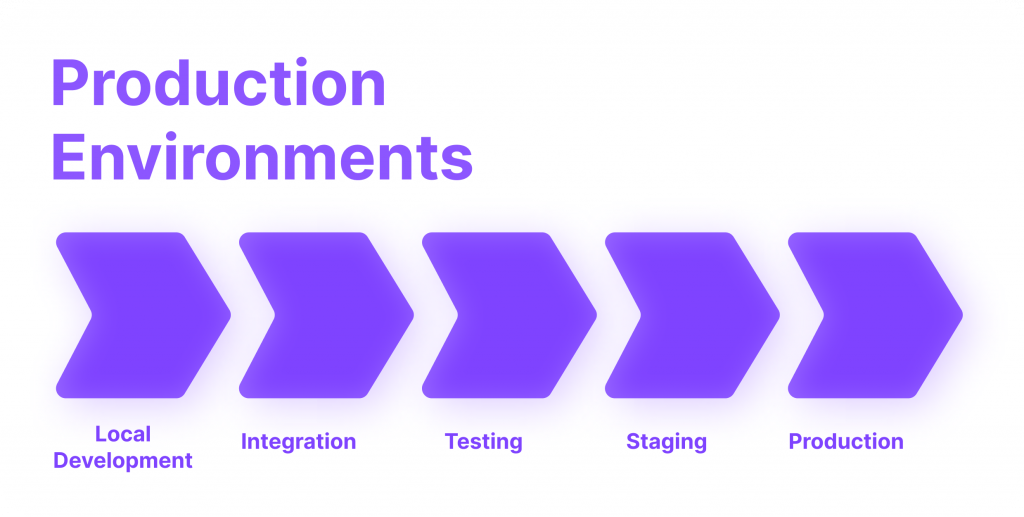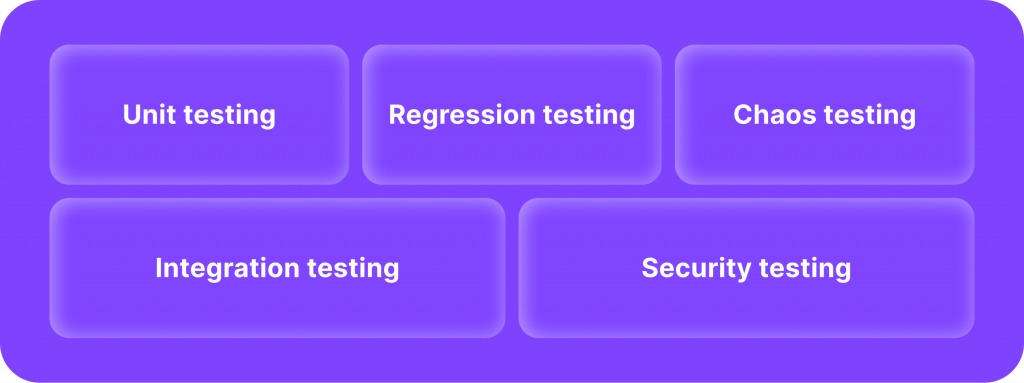What is a Staging Environment?

Staging environments are almost pitch-perfect duplicates of a final digital product that needs to be tested and evaluated before launch.
As our world has become increasingly digital, the art and science behind software development have reached unprecedented heights. In 2023, there is little-to-no tolerance for buggy or unresponsive software at launch. Today, the expectation is that a finished digital product is actually finished and ready to perform optimally even in its first days.
However, for anyone who has written a line of code, it is obvious that bugs, errors, and other unpleasant surprises are inevitable in building a software product. Mistakes are almost a certainty, even with the most skilled and experienced programmers putting maximum effort into software development. So, to combat the ever-present bugs and errors within their finished product, developers turn to staging environments — almost perfect replicas of their original software.
Key Takeaways
- Staging environments serve as nearly identical replicas of the final digital product, allowing developers to test and refine the software extensively before launch.
- Staging environments accommodate various forms of testing, including unit testing, regression testing, chaos testing, integration testing, and security testing, each serving a unique purpose.
- Testing environments focus on specific features or problems while staging environments allow for comprehensive, system-wide evaluations.
- Despite their utility, staging environments can be resource-intensive to set up, especially for complex software, and may not catch all bugs or issues due to slight differences from the live environment.

Why Staging Environments Matter in Development?
Naturally, there are some differences between staging environments and their corresponding software products. These slight differences mostly don’t get in the way of discovering bugs, errors, and other technical difficulties. With this method, developers can test, stress-test, try new updates and modifications to their product extensively and receive immediate feedback.
Most importantly, staging environments do not directly impact the end users, letting developers experiment with the product and iron out any shortcomings without affecting the end-product experience. With staging environments, testing software products and ensuring their optimal performance is much easier, cheaper and more convenient. Now, development companies no longer have to inconvenience their clients to upgrade and polish their digital products.
Naturally, staging environments do not absolve developers from all possible bugs and errors since live product launches can be unpredictable and showcase completely new technical problems. However, staging environments can help developers identify up to 99% of all possible technical issues before launching the final software.
Where Does the Staging Environment Testing Fit In?
It is no secret that developing a robust digital product is an intensive and challenging process. There are numerous stages involved, including planning, defining exact requirements, design, development, testing and deployment. Staging environments occur almost at the end of this long and intensive process.
When constructing a proper staging environment without high costs and excessive overtime, companies wait until the product is almost ready to launch. This way, developers can replicate the entire software environment into local space and initiate staging environment tests.
However, the complexity of creating a staging environment differs from product to product. For example, website staging environments are relatively trivial and do not require any additional programming in most cases. Numerous website builders already have this functionality built into their platform, enabling the website creators to test every detail immediately.
Conversely, staging environments can become challenging for large-scale enterprise software and IT infrastructures. These sprawling products often require dedicated development teams to craft a proper staging environment. But in the end, regardless of the costs and time spent, staging environments are an absolute necessity for any non-trivial digital products, as they ensure high quality and optimal performance across the board.
Staging vs. Testing Environments
Thus far, the staging environment appears to be very similar to the testing environments consistently present in the development cycles. However, these processes are fairly different and contribute distinctly to perfecting the finished product.
So, what is the key difference here? On the one hand, developers have testing environments that have a more narrow focus on a given feature or a problem present within the software. For example, a testing environment can be created to test out the file-uploading capabilities of video software. Therefore, testing environments target a digital product’s specific aspects or technical capacities.
On the other hand, staging environments are more like sandboxes that bring everything together. With their involvement, developers and testers can look at the whole thing and not specific aspects of the software. Thus, it is much easier to identify system-wide problems, presentation issues and other practical shortcomings like the user experience.
In the grand scheme of software development, testing and staging serve as two fundamental pillars of optimal performance. Together, these two phases ensure that a digital product is free from core defects and also performs well in its final form at launch.

Different Tests Within Staging Environments
Staging environments can prove essential in many forms, as this system accommodates numerous vital tests in a given software product. Staging environments provide a consequence-free testing ground for wildly different circumstances, from quality testing, updates, integrations, and security to being prepared for unexpected system breakdowns.
Unit Testing
As the smallest testable items within a software code, units might be small-scale parts of the overall system, but they can still cause a lot of headaches when added to a software code. Many developers conduct unit testing in the staging environments to ensure that newly added units are compatible with the rest of the system and also function properly on their own.
This way, it becomes much simpler to identify even the smallest technical errors instantly and within a small amount of time. After all, it is significantly easier to weed out bugs in a small unit instead of searching for them across the entire software build.
Regression Testing
While staging environments are mostly utilised for launching new digital products, they are equally effective in maintaining the flawless performance of existing ones. Naturally, most digital software requires frequent updates, patches and fixes.
Without appropriate testing, these system updates can cause many problems within the software. Even the slightest changes in two lines of code can sometimes shut down an entire platform, so regression testing is essential almost every time an update gets introduced.
With regression testing, developers can test new features, services and other additions without the fear of sabotaging their overall product. If any errors present themselves, they can be fixed without affecting the user experience.
Chaos Testing
It is widely known that not everything goes according to plan in the digital world of products and platforms. Servers get shut down, systems are overloaded, and the clients keep stressing the software capabilities. These challenges are frequent in the lifetime of a successful software product. Therefore, developers must prepare for these unfortunate circumstances and see how their software handles critical conditions.
Chaos testing is designed to simulate and visualise precisely what happens when software experiences such stressful and challenging conditions. This way, software owners can see what will happen and take appropriate measures to fortify their final product. After all, numerous digital products exceed their user forecasts, and this unexpected success can become a logistical nightmare without proper safeguards.
Chaos testing ensures that these software-bending circumstances will not adversely impact the end-users and cause them to abandon the digital product.
Integration Testing
Frequently, developers have to combine several aspects of their separate systems into a single, well-oiled digital machine. Connecting different systems and their respective codes is often challenging and complex since numerous risks are involved. Software programs built on different frameworks and coding methodologies are especially risky since errors and bugs are highly likely.
With integration testing, developers can safely test how well the different systems get together and if they function correctly in unison. If the potential integration results in technical problems, developers can pinpoint the troublesome areas without affecting the end product.
Security Testing
Finally, developers can utilise their staging environments to ensure airtight security across the entire software system. In most cases, developers simulate cyber breaches using the most dangerous cyber software. As a result, they can monitor and analyse how well their software fares against such malicious attacks and if there is a necessity for additional security measures.
Security testing is also used to test the effectiveness of disaster recovery. Data disasters have become increasingly prevalent in the digital landscape in recent years. After all, information is the most important currency and keeping it safe has never been more crucial. Therefore, any software with sensitive data needs to have appropriate data disaster recovery options.
Disaster recovery testing lets developers see how well their software can recover data without corruption or critical errors. Disaster recoveries must happen fast, as every minute significantly decreases the chance of complete recovery. With security testing, developers can analyse the recovery runtimes and completeness. Additionally, security testing is excellent for testing the fortitude of existing digital software against emerging cyber threats. It is essential to remember that new malicious techniques are created frequently, and ensuring the security of digital products is a continuous process.

Staging Environment Constraints And Shortcomings
While staging environments are a powerful tool in the hands of experienced developers, they are far from being a total assurance against all technical errors. Although the concept of staging environments is effective, there are numerous factors in getting everything right.
Slight Uncertainties
First of all, constructing an exact replica of a digital product is highly costly and even unfeasible. Aside from simple websites and similar products, most software would require a lot of resources to craft an exact copy. Therefore, developers are constantly dealing with uncertainty in staging environments. The conditions are never the same, so some bugs and errors could be present in the final version that are virtually impossible to detect in the staging phase.
Proper Development
Moreover, it is also frequent that developers fail to create a correct staging environment. Sometimes, the structure, latency and framework are ever so slightly different, and these slight variations could cause unforeseen errors during launch. If the staging environment is not developed in the likeness of the final product, numerous errors can slip by, and many features can simply fail to work during launch. This could lead to crippling consequences for a newly launched product. Thus, experience and in-depth knowledge are crucial for creating proper staging environments.
Final Takeaways
With staging environments, developers have received a much-desired chance to polish and experiment with their almost-finished outputs and see what works. This safe replica gives creators maximum freedom to try new updates without any risks of losing end-users. While staging environments can cost quite a lot in some instances, they more than justify their price with what they offer.
So, it is crucial for aspiring developers and digital creatives to implement staging environments into their development cycle. After all, the creation of digital products is often unpredictable, and even the smallest bugs can turn into system-breaking ordeals without the proper attention. Creating competitive and value-driven software is always half the battle, and staging environments help win the other half.


